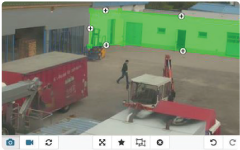





Automatic camera recognition and simple setup with polygonal shapes directly in the live video view enable basic configuration within a few minutes. SAIMOS® Scrambler supports seamless integration with video management systems.
With our dynamic blurring approach, operators to maintain full control of a scene, while not being able to identify individuals. We’ve chosen the approach of full object blurring (instead of face only) as individuals still might be identifiable due to their clothing or style of walking.
SAIMOS® Scrambler is used for maintaining privacy in public areas but also for example in VIP areas in which you don’t want an operator to see who is whom.
1.Input (C3): Milestone (Protocol Integration) à Output: Milestone Universal Driver (1, 16, 64)
2.Input (C3 + Milestone): Camera (RTSP, HTTP) à Output: Milestone Universal Driver (1, 16, 64)
Dynamic and static scrambling for public places or company areas with public access
You cannot copy content of this page